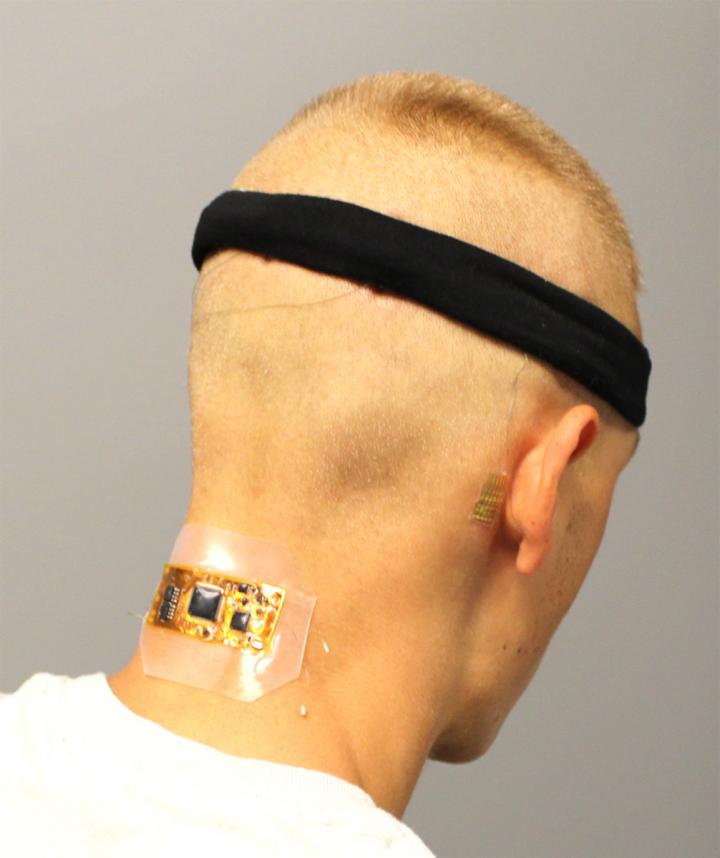
From Facebook to Elon Musk, technology visionaries are working on the promise of brain-machine interfaces (BMIs) to do everything from creating a sixth sense to controlling hearing aids. One major application area for the technology is allowing people with physical disabilities such as spinal injuries to more easily interact with their environment by controlling a wheelchair, interacting with a computer, or operating small robots.
However, current BMI systems require the use of a large, bulky system called an electroencephalograph (EEG). Traditionally, EEG signals are measured using a cap that covers the entire head. So researchers wanted to find a way to miniaturize the technology and make it more discreet and usable in everyday situations.
A group from the Georgia Institute of Technology, the University of Kent, and Wichita State University have worked together to develop a portable EEG system that can be attached unobtrusively at the base of the neck. The flexible, wireless sensors come in a patch that is attached to the skin, along with other electrodes held in place by a headband. The EEG data is processed within the flexible patch and then sent wirelessly to a computer via Bluetooth, which can work at distances of up to 15 meters.
“This work reports fundamental strategies to design an ergonomic, portable EEG system for a broad range of assistive devices, smart home systems, and neuro-gaming interfaces,” Woon-Hong Yeo, an assistant professor in Georgia Tech’s School of Mechanical Engineering and Department of Biomedical Engineering said in a statement. “The primary innovation is in the development of a fully integrated package of high-resolution EEG monitoring systems and circuits within a miniaturized skin-conformal system.”
To test whether the system worked, the researchers took six able-bodied people that demonstrated that they could use it to control an electric vehicle and a small robotic vehicle. The next steps will be to improve the electrodes and to test the system to see whether it works for people with motor impairments. It could be a way for people with disabilities to interact with computers and machines in a more comfortable and practical manner. “This miniaturized, wearable soft device is fully integrated and designed to be comfortable for long-term use,” Yeo said.
The work is published in the journal Nature Machine Intelligence.



